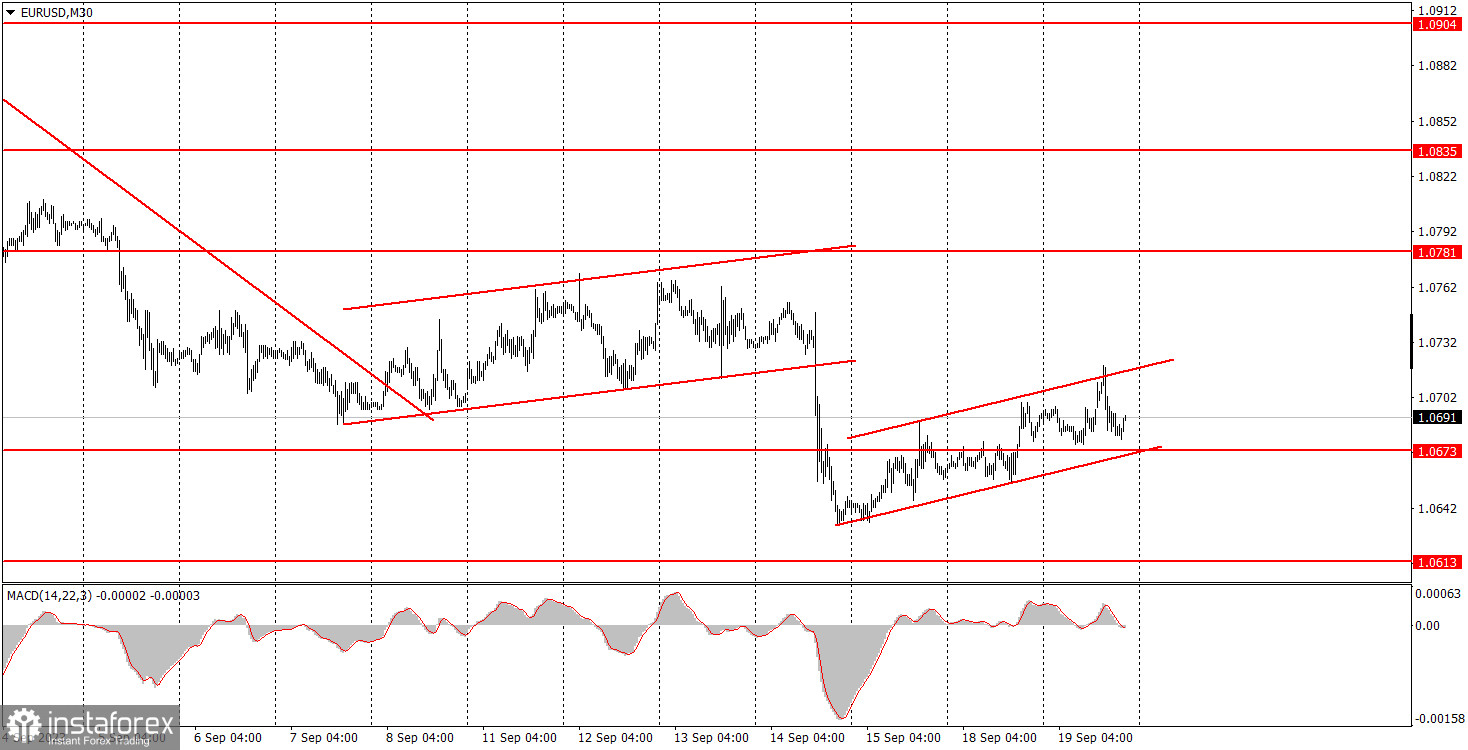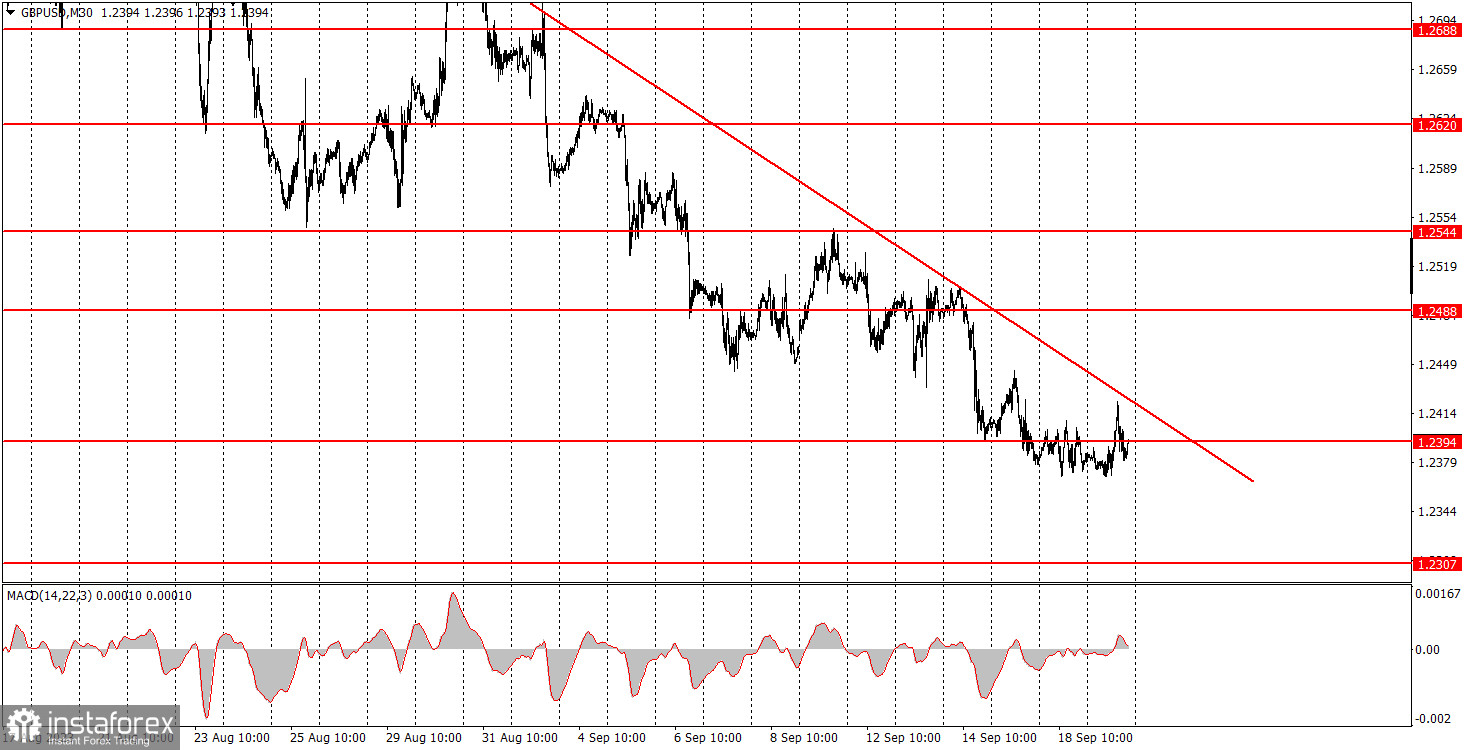Analysis of macroeconomic reports:

There won't be many macroeconomic events on Wednesday, but there are some noteworthy reports. The main report on today's agenda is the UK inflation report. As we've mentioned before, inflation is slowly losing its significance for the market because all three central banks are approaching the end of their tightening cycles. Therefore, whether inflation is falling or rising, quickly or slowly, is not as important as it once was. Nevertheless, it would be incorrect to classify this report as secondary, so it should be enough to stir some market reaction.
Analysis of fundamental events:

In the European Union, seven European Central Bank officials will speak. Since last Thursday, we've seen a similar number of speeches, and most of the comments have focused on the end of the tightening cycle in the EU. We believe that the new round of comments is unlikely to be different in nature and is unlikely to provoke an immediate market reaction, as previous statements have not done so. More likely, this information will simply serve as background noise for the euro, which significantly reduces its ability to rise in the near future.
Of course, the key event of the week is the Federal Reserve's meeting, where the rate may remain unchanged for the second time in this current cycle. Nevertheless, the market can count on one more rate hike, which is one more increase than the EU. If Federal Reserve Chair Jerome Powell insists on hawkish rhetoric, the dollar may continue its upward movement.
General conclusion:
In summary, on Wednesday, the two most important events are the UK inflation report and the Federal Reserve's meeting. The meeting will conclude late in the evening, and beginners have probably left by then. However, inflation in the UK will be known in an hour and a half, which can set the tone for the pound's movement.
Basic rules of a trading system:
1) Signal strength is determined by the time taken for its formation (either a bounce or level breach). A shorter formation time indicates a stronger signal.
2) If two or more trades around a certain level are initiated based on false signals, subsequent signals from that level should be disregarded.
3) In a flat market, any currency pair can produce multiple false signals or none at all. In any case, the flat trend is not the best condition for trading.
4) Trading activities are confined between the onset of the European session and mid-way through the U.S. session, post which all open trades should be manually closed.
5) On the 30-minute timeframe, trades based on MACD signals are only advisable amidst substantial volatility and an established trend, confirmed either by a trend line or trend channel.
6) If two levels lie closely together (ranging from 5 to 15 pips apart), they should be considered as a support or resistance zone.
How to read charts:
Support and Resistance price levels can serve as targets when buying or selling. You can place Take Profit levels near them.
Red lines represent channels or trend lines, depicting the current market trend and indicating the preferable trading direction.
The MACD(14,22,3) indicator, encompassing both the histogram and signal line, acts as an auxiliary tool and can also be used as a signal source.
Significant speeches and reports (always noted in the news calendar) can profoundly influence the price dynamics. Hence, trading during their release calls for heightened caution. It may be reasonable to exit the market to prevent abrupt price reversals against the prevailing trend.
Beginning traders should always remember that not every trade will yield profit. Establishing a clear strategy coupled with sound money management is the cornerstone of sustained trading success.





















